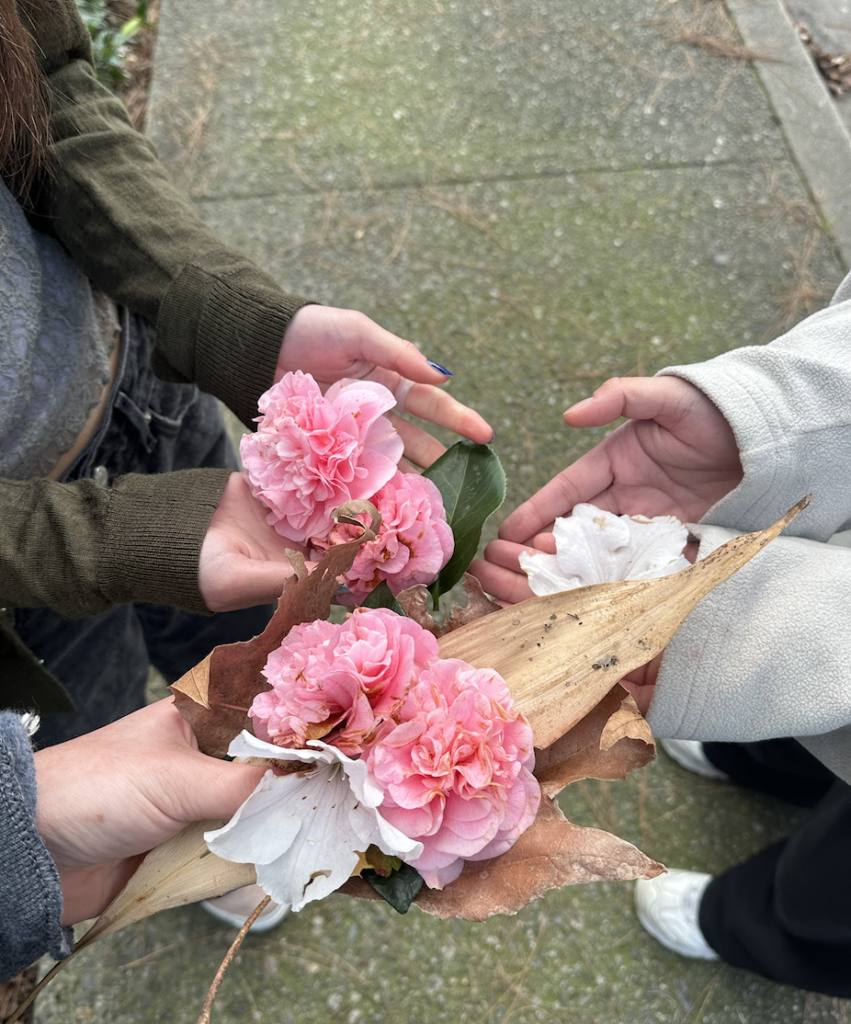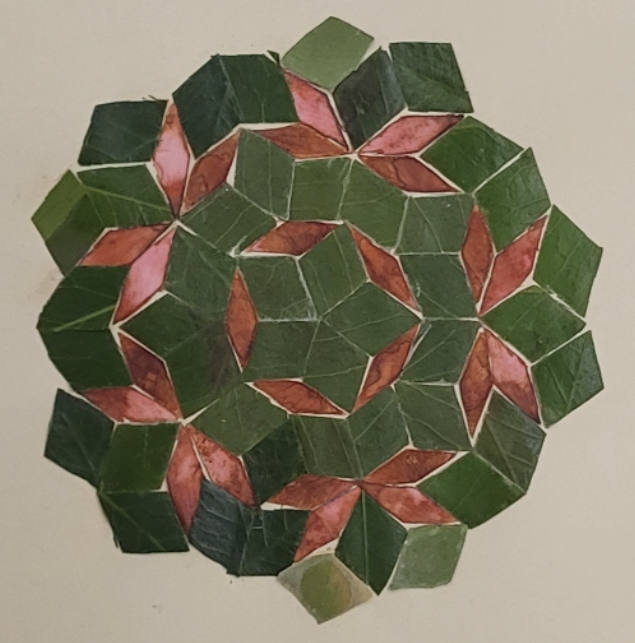We decided to create a Penrose tiling using flowers and leaves for our Project 0A. A Penrose tiling uses two different tiles: a 108° rhombus and a 144° rhombus. These two different tiles come together to create an aperiodic tiling (https://www.ams.org/publicoutreach/feature-column/fcarc-penrose). We used this photo as a reference for our Penrose tiling:
We decided on the Penrose tiling for simplicity as the rhombus-shaped tiles were easier to create with our resources. We wanted to use flowers to create our tiling as we had seen that flowers can be related to mathematics through the Fibonacci sequence: the number of petals or even seed patterns land on a Fibonacci number. We thought that tilings could be a way to use flowers through art and represent mathematics.
Originally, we wanted to create the whole tiling out of flower petals; however, we realized that the petals were extremely delicate. We decided to use leaves as well as petals to make the process easier.
The pink color of the flower petals stands out against the dark green leaves, emphasizing the differentiation between the two types of tiles! We foraged flowers and leaves from around Mudd and Scripps. We made sure to only use already fallen/dead plants. We collected the pink flowers from Scripps’ Campus, and the leaves were found along Platt Blvd.

An issue we ran into was figuring out how we wanted to cut out the Penrose tiles from the flowers. We decided to flatten and dry the flower petals first, then cut them out with a blade and stencil. We cut out a wooden stencil using the laser cutter to try to make the tile shapes uniform. We found that cutting fresh flower petals was easier and less fragile than cutting dried petals, so we resorted to cutting the flower petals out first, then flattening and drying them as we worked. Still, cutting the flower petals out was difficult. As a result, the Penrose tiles aren’t shaped perfectly, but once we glued them together in the tiling pattern on a background it came together nicely 🙂
Here is a cool youtube video about penrose tilings: Why Penrose Tiles Never Repeat
And here is a link to a fun website: https://aatishb.com/patterncollider/?symmetry=8 where u can make tilings using grids!
some we made^
here is our final product !!

– ✌️
Leave a Reply